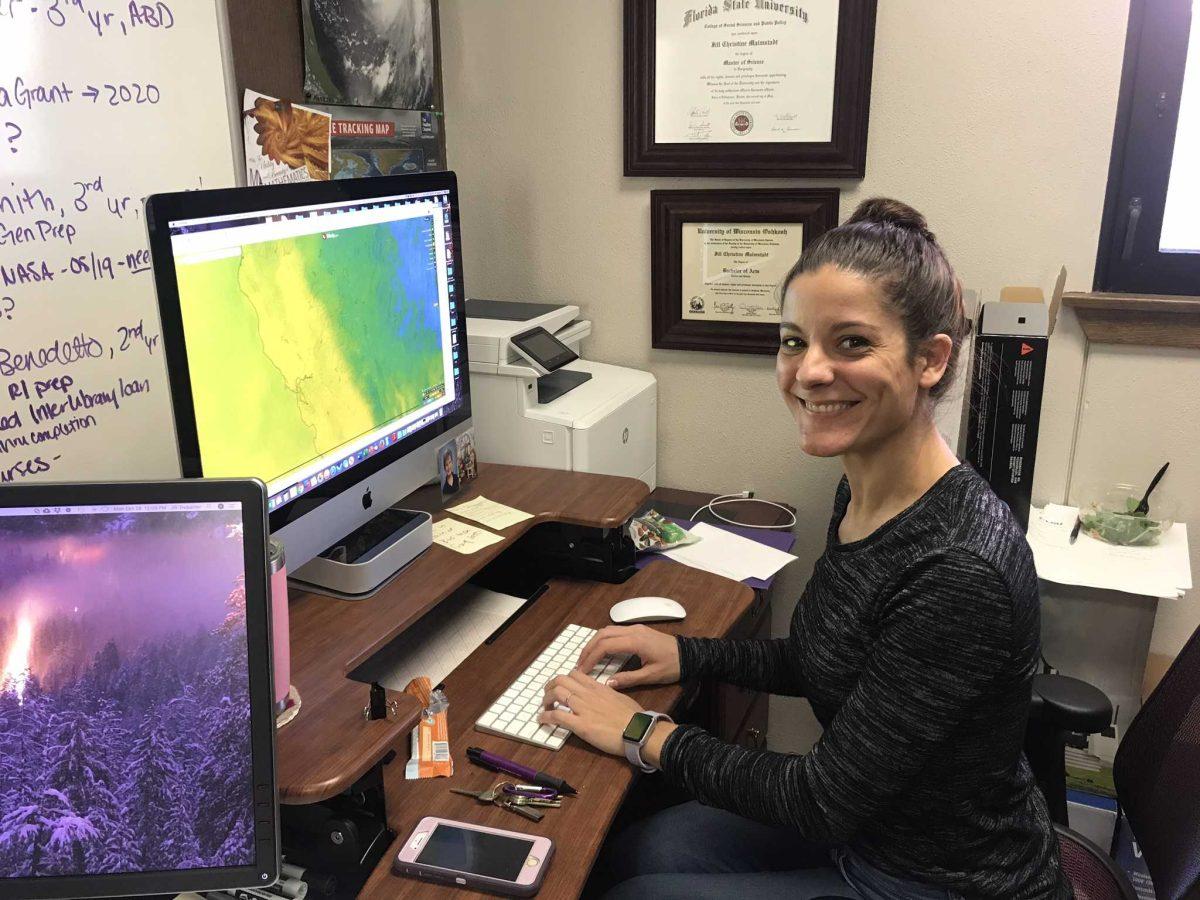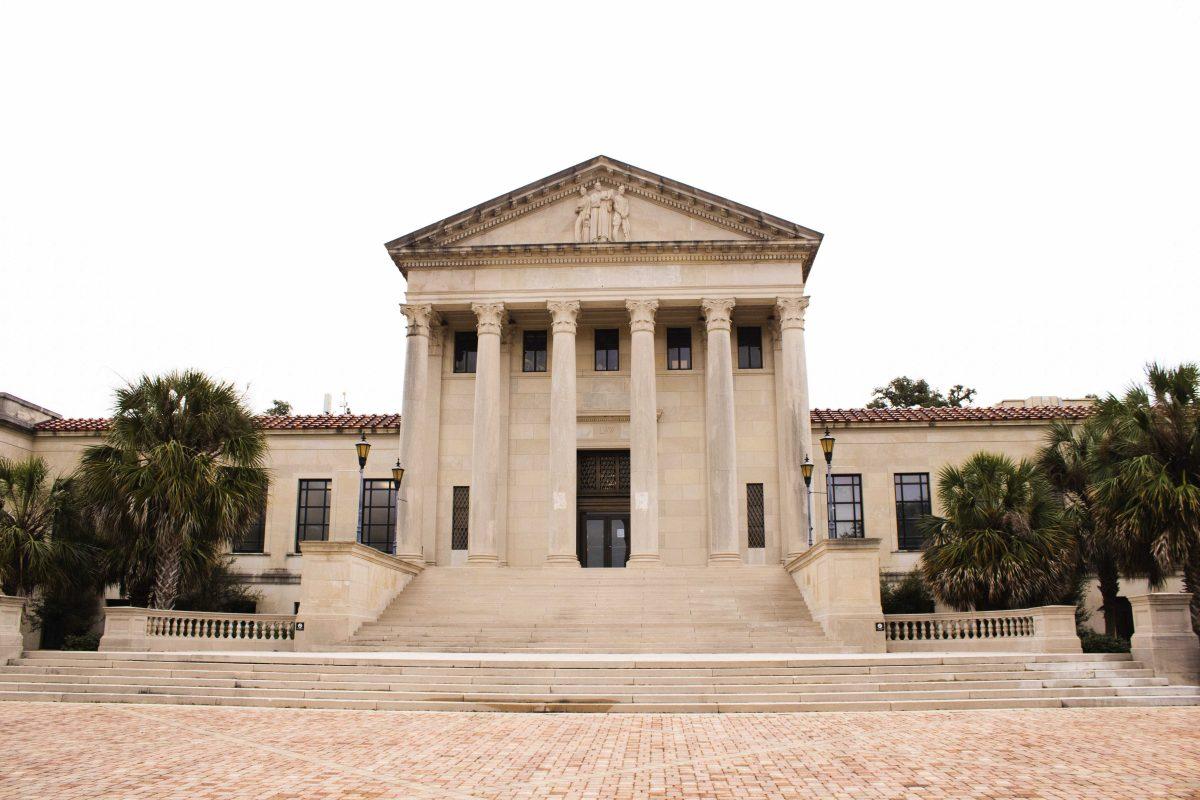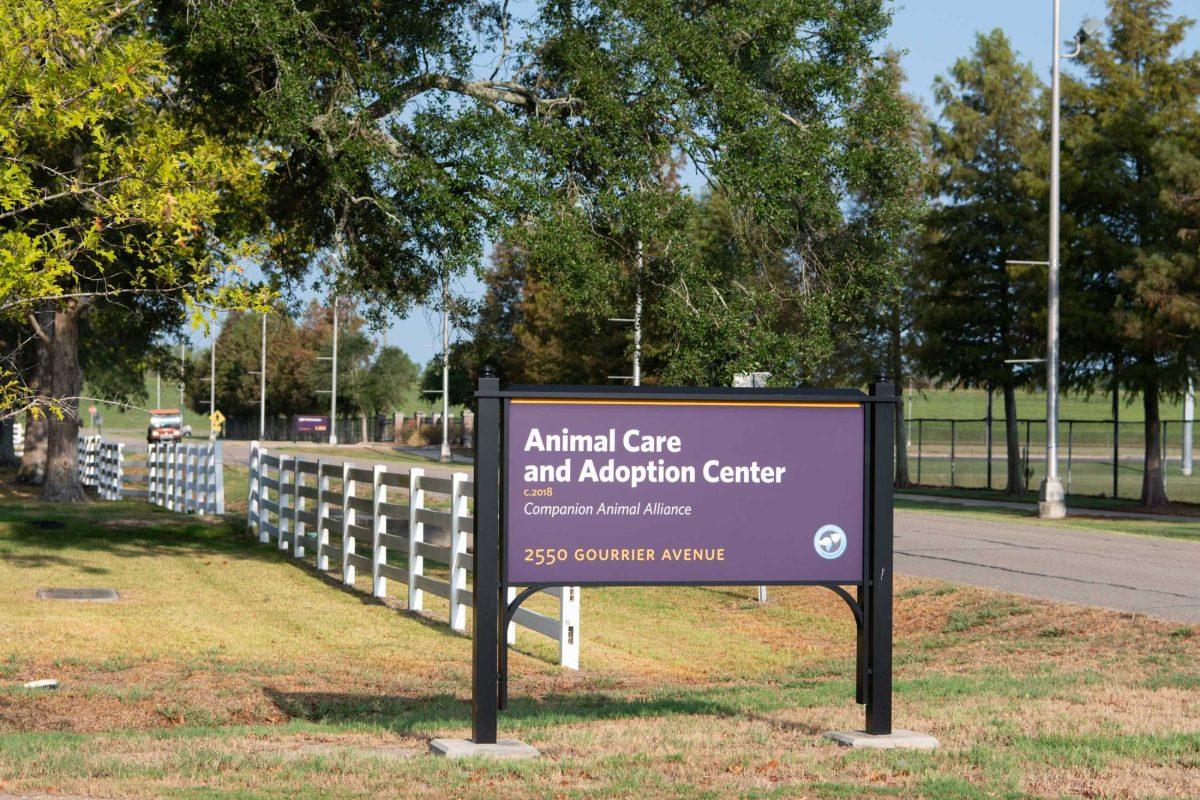Not many people can say they were certified to fly into the middle of a hurricane, trained with the United States Marine Corp, or are sponsored by NASA. But Jill Trepanier can.
Climatologist and geography associate professor Jill Trepanier, originally from Wisconsin, graduated from the University of Wisconsin Oshkosh and moved to Florida State University, where she got her degree and Ph.D. in 2012.
She was then hired as a climatologist at LSU.
“I love the sunshine, maybe because I grew up in Wisconsin and so much of the year is under a lot of gray clouds,” Trepanier said. “I would have to say that, for LSU, the students’ camaraderie and support of the Tigers is also pretty impressive. It’s a cool environment to be in.”
At the University, she teaches classes on a variety of subjects, including introductory geography, meteorology, hurricane climatology and tropical atmospheres.
“If it’s something about bad weather in the tropics, chances are I’m the one teaching about it,” Trepanier said.
Her research focuses on predicting the location hurricanes will make landfall, when they will make landfall and the severity of the storm at that point. However, Trepanier’s work extends beyond teaching and working at the University.
Trepanier received training with the U.S. Marine Corp in 2010 to become a NOAA Hurricane Hunter, allowing her to fly into hurricanes. She learned survival training, including how to survive if an aircraft crashes, and survival tips for various situations.
“Did you know Fritos are flammable?” Trepanier laughed. “Probably shouldn’t eat them, but definitely useful in your survival kit.”
When she first arrived in Louisiana in 2012, Hurricane Isaac was just four weeks away from making landfall there.
“I made jokes about how it was my first real hurricane welcoming party,” Trepanier said.
She was offered the opportunity to fly into the storm, but turned it down, saying she had never been on the ground for a hurricane and wanted to see the storm from that perspective.
“I should’ve said yes, because I live in Louisiana, so statistically speaking, I’m going to get a lot more,” Trepanier said.
Now that she has two children, who are six and three-years old, Trepanier said she will be keeping her feet on the ground until they are older.
Trepanier has also been sponsored by NASA for the past four years to place lightning detection arrays in and around the University’s campus.
She is studying an energy signature related to lightning strikes known as a terrestrial gamma flash, which was not thought possible on Earth until recently.
Trepanier said she became a climatologist because she loves the planet, and has since she was a little girl. After she took a weather and climate general education class in college, much like one of the classes she teaches now, she fell in love with climatology.
“I said, ‘wait a minute, you’re telling me that I can help people understand weather, talk to people about it, and not have to understand thermodynamics? I’m cool with that,’” Trepanier said.
Trepanier said some of her favorite aspects about her position at the University include spending time with students and helping them find their passion. This passion for weather and climate will prove increasingly useful in the coming years, according to Trepanier, because of the impact climate change is having on hurricanes and other weather events.
“Some of that major concern is going to be realized in the next couple of decades, as it kind of already is, whether our current administrations believe that or not,” Trepanier said. “So, I think there is going to be a need for people who can understand it and communicate it to the public. I like to think that that may be able to be me somewhere along the line.
LSU geography professor certified Hurricane Hunter and conducts NASA sponsored research
October 21, 2019







